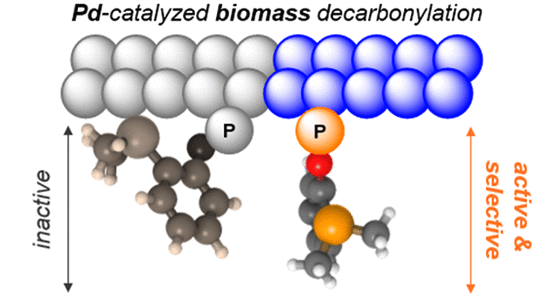Selective conversion of biomass-derived substrates in heterogeneous catalysis can be achieved through the functionalization of nanoparticles with surface modifiers (ligands). However, full understanding of reaction mechanisms at the atomic level of detail is still limited. Herein we rely on computational approaches to address this challenge. We employ Density Functional Theory to understand the role of phosphine-decorated palladium nanoparticles in the decarbonylation of fatty acids to produce linear α-olefins. While self-assembled monolayers of monodentate ligands completely passivate the metal surface, the flexibility of bidentate counterparts allows the creation of transient cavities that: (i) enhance selectivity and (ii) prevent catalyst deactivation. Such detailed insight provided by theory can pave the way for a rational design of metal–ligand interfaces in biomass upgrading.
